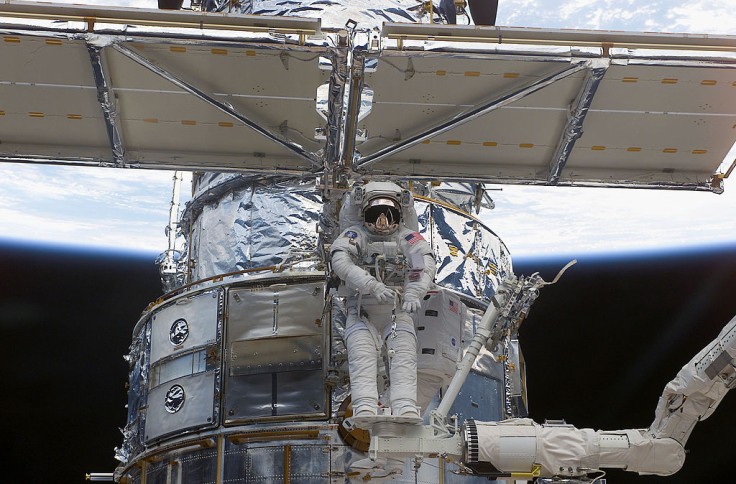
The NASA Hubble Space Telescope recently captured images showing several stars being born.
NASA Hubble Image: B-Type Star Factory
In a blog post, NASA Hubble showed that it has taken an image of a nebula producing massive stars. Stars are formed when turbulent clouds of gas and dust collide due to their own gravitational effects. As the cloud compresses, a dense and hot core develops, which starts to collect dust and gas to eventually form a protostar.
The captured nebula is a star-forming nebula located in the constellation Aquila. This type of nebula is also known for producing a type of massive star known as a B-Type star, which consists of young and blazing blue stars that are five times hotter than our Sun. In addition to this, its surface temperature ranges between 10,000 and 30,000 K.
Welcome to the B-Type star factory ✨
— Hubble (@NASAHubble) November 16, 2021
This star-forming region produces B-Type stars: Young, blue stars up to five times hotter than our Sun!
Learn more: https://t.co/0gBDX9oLBD#NebulaNovember pic.twitter.com/GS7c4Wtw4r
Moreover, the NASA Hubble Space Telescope investigated this area since gigantic protostars are located in this region. Apart from this, the investigation is also part of a program analyzing jets of glowing gas propelled into space by massive protostars. These fast-moving jets, which are formed as gas accumulates around newly emerging stars and survive for only 100,000 years, are known to have a special part in forming stars.
For this reason, Astronomers began to wonder if these jets have the same effect on the creation of massive stars as they do on lower-mass stars.
Massive stars seem to be more common, farther away, and covered by dust than lower-mass stars which makes researching into their jets more difficult. This particular star is also known as hypergiants which are 100 times more massive than the Sun and have surface temperatures of over 30,000 K, per NASA.
To have a detailed information of what massive stars are, it produces hundreds of thousands of times the amount of energy that the Sun does, yet their lives only lasts a few million years long. Although extreme stars like this were assumed to be widespread in the early universe, they are now extremely rare. Additionally, the entire Milky Way galaxy contains only a handful of hypergiants.
On the other hand, researchers have merged NASA Hubble infrared observations with radio telescope data in order to have a look inside these dusty star-forming regions. By doing this, they have discovered a material jet with features comparable to those found in early, low-mass stars. This only means that the mechanism creating the light emitted by these jets is identical in young stars of masses up to ten times the mass of the Sun.
NASA Hubble Space Telescope Captures a Newly Forming Star In IC 2631
Aside from the B-Type star factory, the recent NASA Hubble image posted showed that there is a newly forming star in the nebula IC 2631.
The said image is a protostar that is part of the Chamaeleon star-forming area in the southern constellation Chamaeleon.
⭐ A star is (almost) born
— Hubble (@NASAHubble) November 17, 2021
This new Hubble image shows a protostar within the reflection nebula IC 2631. Once the protostar collects enough material, nuclear fusion will begin: https://t.co/XJMFabAR1r#NebulaNovember pic.twitter.com/gaXAAdAfX4
The thermal energy released by contracting clouds around protostars, as well as the collection of material from neighboring gas and dust, causes protostars to shine.
After enough material has accumulated, the protostar's core becomes hot and dense enough for nuclear fusion to start, and the transformation into a star is complete. The remaining gas and dust can form planets, asteroids, comets or simply stay as dust.
This captured image is part of a Hubble investigation that aims to find 312 protostars within molecular clouds that have already been discovered by the Spitzer and Herschel infrared space telescopes. Because protostars release a lot of thermal energy, they are only visible in infrared light, and their visible light is hidden by the dust around them.
Hubble's improved infrared capabilities could help researchers better resolve protostars and investigate their structure, including the accumulating gas, dust and faint partner objects.









